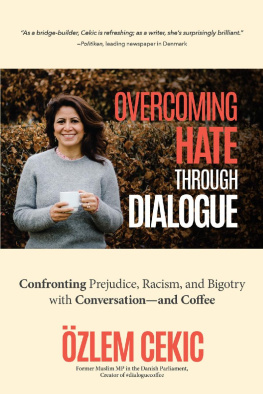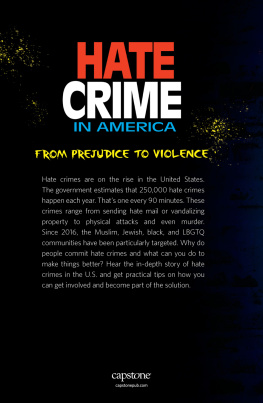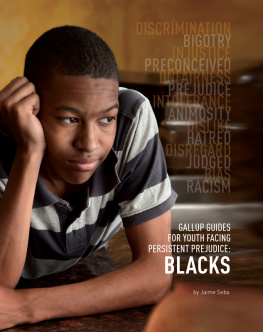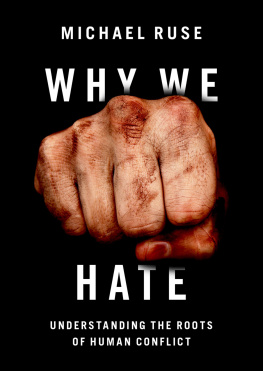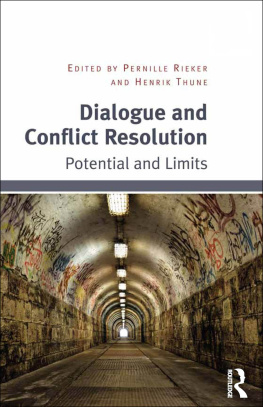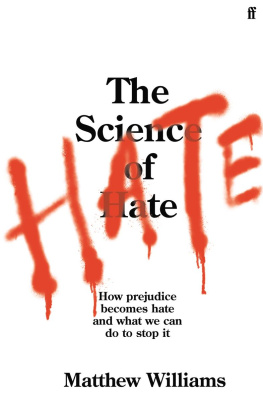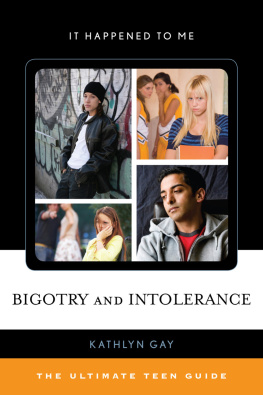Praise for
Overcoming Hate through Dialogue
The bravest woman in Denmark goes on a beautiful mission of bridge-building by sitting down for coffee with those who are seething in anger.
Dansk e Kommuner
If you think this project and book title sound sentimental and touchy-feely, keep reading. Youll soon be applauding the writer. The writers enormous emotional investment in humanity is made evident by well-written passages which reveal the strength of the book and its greatest accomplishment: giving a familiar face to those who hate.
Dagbladet I nformation
In this truly democratic and engaging book, the writer is on a mission to inspire others to open dialogue with those whom they disagree withor maybe even despise.
Wee kendavisen
This brilliant and well-researched book ought to be required reading for anyone interested in conflict resolution; it gives nuance to an otherwise stale-mate d debate.
Jo urnalisten
I was honestly inspired at how Cekic, all by herself, faces down men who have lobbed threat s at her.
Avisen
Cekic reports on the fringe elements of hatred, powerlessness and anger. The result is a unique tour guide into the depths of the darker sides of society, where the lack of empathy and solidarity fosters racism, prejudice and fury. As a bridge-builder, Cekic is refreshing; as a writer, shes surprisingly b rilliant.
Politiken

Copyright 2020 by zlem Sara Cekic.
Published by Mango Publishing Group, a division of Mango Media Inc.
Cover Design: Roberto Nunez
Cover Photo: Robin Skjoldborg
Author Photo: Tina Rossing
Layout & Design: Carmen Fortunato
Mango is an active supporter of authors rights to free speech and artistic expression in their books. The purpose of copyright is to encourage authors to produce exceptional works that enrich our culture and our open society.
Uploading or distributing photos, scans or any content from this book without prior permission is theft of the authors intellectual property. Please honor the authors work as you would your own. Thank you in advance for respecting our authors rights.
For permission requests, please contact the publisher at:
Mango Publishing Group
2850 S Douglas Road, 2nd Floor
Coral Gables, FL 33134 USA
For special orders, quantity sales, course adoptions and corporate sales, please email the publisher at or +1.800.509.4887.
Overcoming Hate through Dialogue: Confronting Prejudice, Racism, and Bigotry with Conversationand Coffee
Library of Congress Cataloging-in-Publication number: 2020940938
ISBN: (print) 978-1-64250-376-0, (ebook) 978-1-64250-377-7
BISAC category code SOC031000, SOCIAL SCIENCE / Discrimination & Race Relations
Printed in the United States of America
I dedicate this book to Finn Norgaard, who was attending an event celebrating freedom of expression at the Krudttonden Cultural Center on February 14, 2015, and to Dan Uzan, a volunteer guard who, on the same day, stood in front of the synagogue in Krystalgade, where a young Jewish girl was celebrating her ba t mitzvah.
Both Finn and Dan fell victim to the lack of democratic dialogue in Denmark, losing their lives during the terrorist attack in C openhagen.
I want to honor the ir memory.
Table of Contents

Learn from yesterday, live for today, hope for tomorrow. The important thing is not to stop que stioning.
Alber t Einstein
A s a Turkish immigrant born to Kurdish parents, I became one of the first ethnic minority women to win a seat in the Danish Parliament in 2007. It was also the year I began receiving hate mail. Its amazing how quickly I got used to finding my inbox ful l of hate.
Whats a Paki like you doing in our parliament? theyd write. You dont belong here! Or simply, T errorist.
Delete. Delete. Delete. I never even considered replying. We had absolutely nothing in common; they didnt understand me, and I didnt understand them. As far as I was concerned, engaging with anyone so entrenched in their own ignorance would have been a complete waste of time a nd effort.
Then, one day, my colleague suggested I should save these messages. If nothing else, she said, theyll be useful to the police when something happens to you. I noted that she said when something happens, not if.
Though I didnt really believe it would come to that, I took her advice and started saving every email that arrived. For a while, they were simply filed and forgotten. That is, until things took a more worrying turn. In 2008, I returned from my summer vacation to find a card in my mailbox. It was decorated with the Danish flag, and since, in Denmark, we use the flag to mark any festive occasion, my first thought was that it must be a party i nvitation.
But inside was something rather different. Return tickets home. Go back to your terrorist brothers. These greetings had come from the Danish Associationan organization with deep roots in Denmarks extreme right. That they knew my address was frightening enough. But when I examined the envelope, I saw, to my horror, that there was no stamp. It hadnt arrived by post; it had been delivere d by hand.
In my mind, that changed everything. The reassuring distance I thought Id established between me and my abusersbetween my kids and my abusershad suddenly evaporated. Whoever these people were, they were too close for co mfort now.
Immediately, I took steps to remove my address from public records. I made sure that the names of my childrens daycare and schools were not publicly available either. But, at the same time, I knew that the more involved I became in parliamentary debates, the more I would attract this kind of attention, and the steadier the stream of threats and abuse wou ld become.
These threats ranged from the vague (We know where you live) to the terrifyingly specific (The day you become a minister, we will cut your throat). I received them; I read them; I passed them all on to the police. This became my n ew normal.
But in the spring of 2010, a neo-Nazi began to harass me. I couldnt dismiss his actions as an idle threat to my safety. This was a man who had previously attacked Muslim women in the street. For more than eight months, he called me day and nightsometimes upwards of forty times a day. I had become his obsession.
One day, while I visited the zoo with my kids, my phone rang. I ignored it, certain it was him. We had just arrived and had only gotten as far as the lions den. I was determined not to allow him to ruin our day. But when I saw his text, I panicked.
Convinced that he was at the zooand that he was watching uswe got out of t here fast.
When we were back at home, my son Furkan asked, Mum, why does he hate you so much, when he doesnt even know you?
I told him, Some people are just stupid. At the time, I thought that was a pretty clever answer. Were the good guys. Theyre the bad guys. Thats all you need to know.
But how I wish it were that simple. The truth was this man had upended my life. He was the reason I parked my car in a different spot every night when I came home; the reason I constantly looked over my shoulder in the street; the reason I could no longer enjoy a day out with my children.
Several weeks after the incident at the zoo, I confided in my photographer friend, Jacob Holdt. Jacob had documented racism in the United States in his book American Pictures , so I was sure he was the right shoulder to cry on.
Tearfully, I told him my fears, and about the fury I felt over the restrictions this neo-Nazi idiots behavior had created in my daily life. I waited for words of comfort and reassurance. Instead, his response knocked me sideways.
Next page
